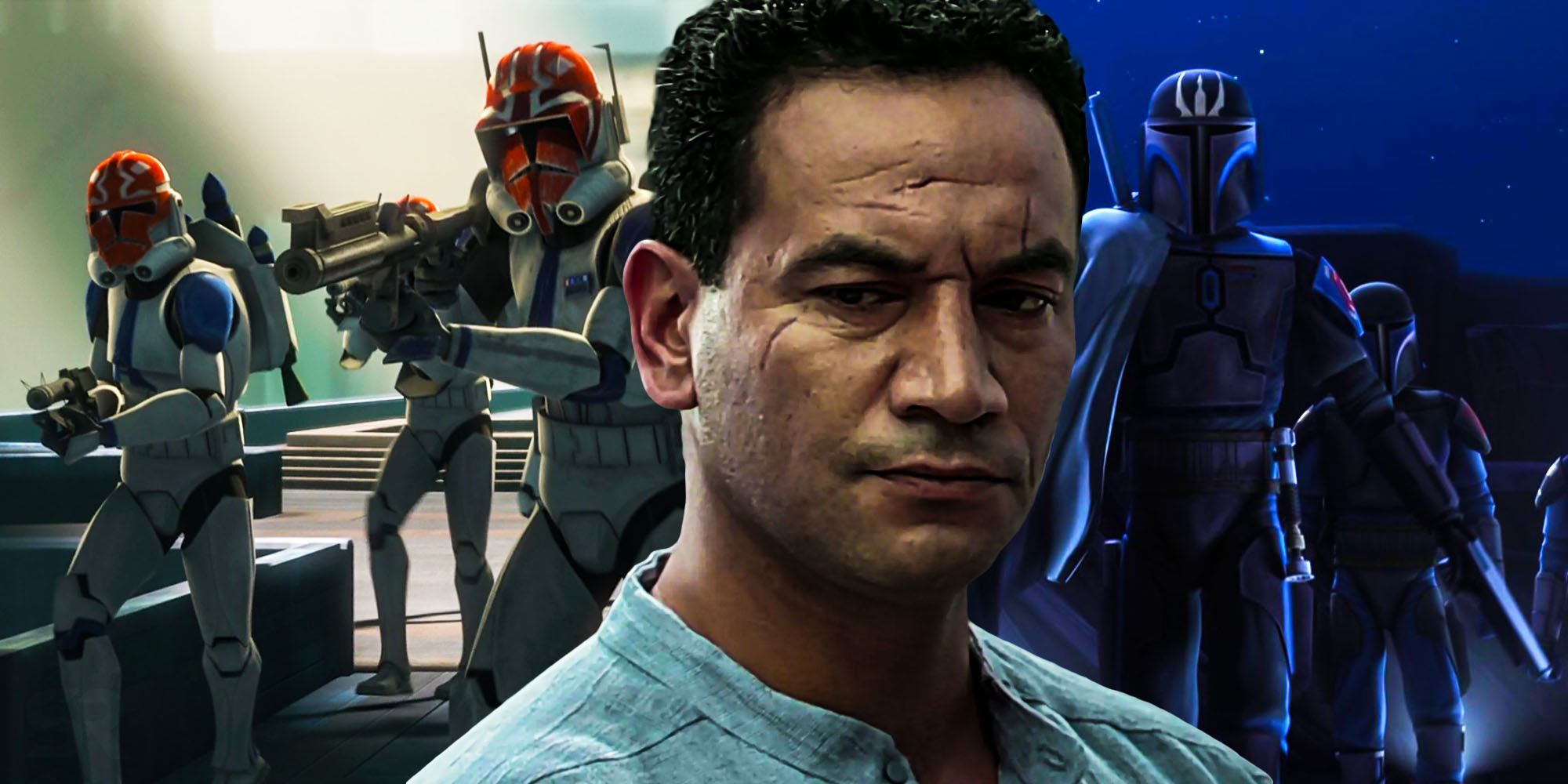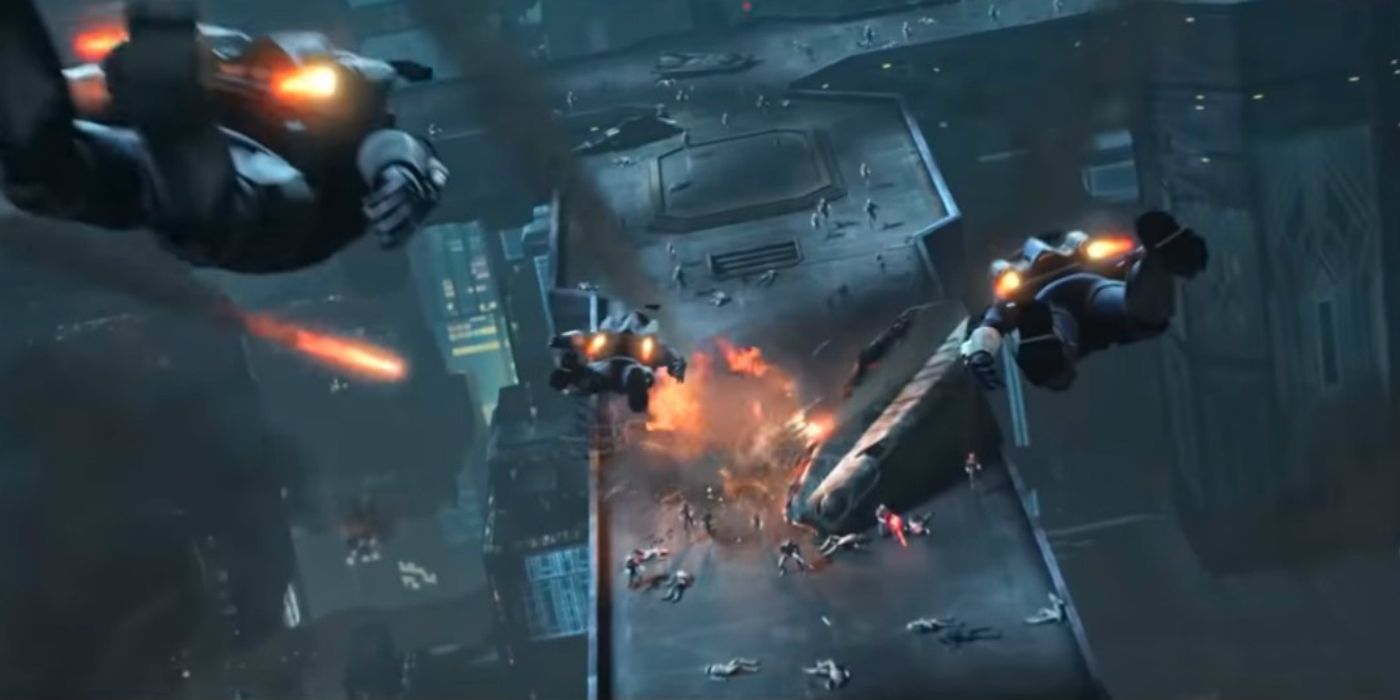
The epic four-part series finale of Star Wars: The Clone Wars depicted the Siege of Mandalore, a clone victory that indirectly honored their template, Jango Fett. In the final days of the three-year Clone Wars, the former Sith Lord Maul, in command of an army of Mandalorian Death Watch warriors, reconquered Mandalore, threatening to become a third party in an already-chaotic conflict. Led by clone Captain Rex and former Padawan Ahsoka Tano, Republic clone troopers engaged Death Watch forces in open combat. Although the clones suffered heavy casualties, they definitively proved their superiority in a victory that would have made Jango Fett proud.
Jango Fett was the template of all Republic clone troopers. While the original Star Wars timeline, Legends (formerly called the Expanded Universe), showed Fett to be proud and heavily involved in the training of all his clones, the new canon’s Jango treated clone troopers with indifference, seeing only his son Boba as his legacy. Nevertheless, the Republic clones inherited their template’s renowned battle prowess (due, in large part, to their training) and fought alongside the Jedi Knights as heroes, saving countless beings across the galaxy. Their reputation was tarnished, however, when Order 66 brainwashed most clones to kill the Jedi leaders and support the Empire’s oppressive rule.
The Mandalorian season 2 recontextualizes the canon version of Jango Fett by retroactively making him more similar to his Legends counterpart. An older Boba Fett reveals to Din Djarin that Jango was a Mandalorian foundling and a veteran of the Mandalorian Civil War. Moreover, Fett’s chain code reveals that Jango’s mentor may have been Jaster Mereel. This is almost identical to Jango’s Legends-era backstory, in which he fought against the Death Watch, who’d murdered his family when he was a child. Assuming that the canon version of Jango also fought against the Death Watch, the Republic clones defeating them during the Siege of Mandalore posthumously honors Fett.

Jango nearly destroyed the Death Watch in Legends, killing their leader, Vizsla, and frightening the remaining forces to the point where they laid low until Jango’s death on Geonosis. Canon significantly changed Mandalorian lore from the Legends timeline, but the Death Watch’s status as a brutal (yet ultimately cowardly) extremist group remained, as shown throughout The Clone Wars. The Republic may not have destroyed the Death Watch during the Siege of Mandalore, but they definitively proved their superiority with what was essentially an army of the Death Watch’s old nemesis.
Maul’s forces were elite Death Watch warriors who were far superior to the Separatist Alliance’s droids. With only a small detachment of the 501st sent to Mandalore, the Republic didn’t have a significant numerical advantage over the Death Watch. To make matters worse, they lacked beskar armor and familiarity with the city of Sundari, putting them at a massive disadvantage. Even with some assistance from a small Death Watch splinter group, Bo-Katan's Nite Owls, the odds were not in the Republic’s favor. Despite this, the clones prevailed. The clones appeared to have blasted their Death Watch opponents between their beskar plating, and the clones’ innately superior fighting skills won the day.
Before becoming a bounty hunter, Jango Fett’s life was defined by his conflict with the Death Watch. Their brutality orphaned Jango and forced him to become a child soldier for the sake of survival in Legends. If canon’s Jango retains this backstory, he’d have been proud to see a Clone Army who all share his face defeat the Death Watch and retake Mandalore in Star Wars: The Clone Wars.
from ScreenRant - Feed https://ift.tt/3E3tfKu

0 Comments